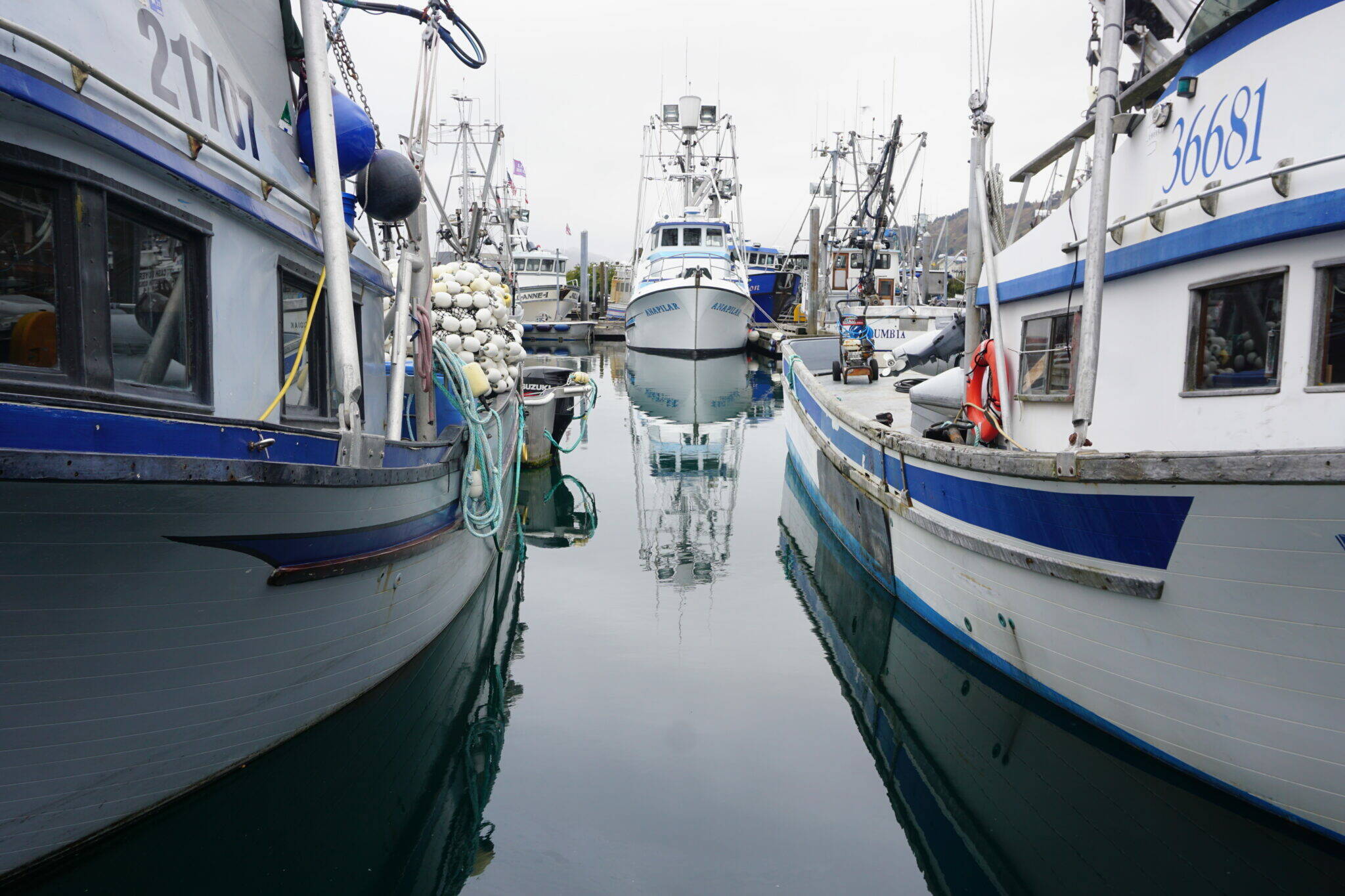Alaska fish-harvesting employment declined in 2022, a continuing yearslong slide caused by a variety of factors, according to an analysis by the state Department of Labor and Workforce Development.
Employment for people harvesting seafood dropped by about a quarter from 2015 to 2022, according to the analysis, published in the November issue of Alaska Economic Trends, the department’s monthly research magazine.
The industry lost ground compared to other sectors of the Alaska economy, the analysis found. Seafood harvesting accounted for 7.3% of Alaska jobs in July of 2021, but only 5.7% of Alaska jobs were in seafood harvesting in the following July. Fishery work is highly seasonal, and July is the peak month for it.
That one-year change showed how fish-harvesting employment continued to dwindle even while other Alaska sectors, notably tourism, were recovering from the COVID-19 pandemic, said Joshua Warren, the state economist who wrote the Trends article.
“They’re going down a little bit, while other industries were popping back up,” he said. “If there was going to be a snapback from COVID, it should have been this year, in the 2022 season, and we didn’t really see it.”
While Warren’s article focused on harvesting specifically, he noted that the lagging recovery from the pandemic extended more broadly in the Alaska seafood industry. Fish harvesting and fish processing, in combination, accounted for over 10% of Alaska’s July employment in 2022, but that was down from over 13% in July of 2021, he said.
In all, seafood harvesting jobs averaged 6,331 per month in 2022, down from 8,501 in 2015, the recent peak year, Warren’s analysis found. In the peak month of July, the 2022 employment total was 20,231, compared to the July 2015 total of 24,594.
Multiple factors have contributed to the employment-loss trend, Warren said.
Since 2015, there has been a decrease in the number of active permit holders, which means there are fewer captains working and fewer crew members being employed, he said.
The COVID-19 pandemic accelerated the longer-term decline in fish-harvesting jobs. From 2019 to 2022, Alaska fishery employment declined by 17.3%, according to Warren’s analysis. Companies operating in Alaska waters during the pandemic reduced crew sizes for health reasons, but more importantly, some of the vessels that stopped operating in Alaska during the pandemic had yet to return to the state by 2022, the analysis found.
Fishery disasters also disrupted employment.
Shellfish harvesting has suffered the steepest job losses, largely resulting from closures of key Bering Sea crab fisheries deemed necessary because of poor stocks. Those closures reversed what had been a trend of job growth for shellfish harvesting, even during the pandemic.
Crashes of salmon runs in the Yukon and Kuskokwim rivers largely wiped out fish-harvesting employment in Western Alaska’s Yukon-Kuskokwim Delta, the analysis said. There were over 1,000 salmon-harvesting jobs in the region in August 2018; four years later, that number was zero, the report said.
There are some categories bucking the downward trend, Warren’s analysis found. Salmon-harvesting employment in the Bristol Bay region is back up to its pre-pandemic level, he found. Bristol Bay’s strong salmon returns have contrasted with weak returns in other regions, he noted.
Future prospects for fish-harvesting employment are unclear, but there are continued negative signs, Warren said. The closure of the Bering Sea snow crab fishery was just extended for another year, his article noted. And while the Bristol Bay red king crab harvest reopened in mid-October after two years of closure, the allowable catch is very limited, making this season’s fishery small.
Additionally, a flood of Russian fish into world markets has driven down prices this year for a variety of Alaska’s fish species, a situation expected to continue, Warren’s analysis said.
Industry experts have noted the influence of Russian supplies on prices for Alaska fish, including pollock, the top-volume seafood harvest in the state and the nation. In the case of salmon, Russian supplies are combining with supplies from huge harvests in Alaska to depress prices, according to industry experts.
• Yereth Rosen came to Alaska in 1987 to work for the Anchorage Times. She has reported for Reuters, for the Alaska Dispatch News, for Arctic Today and for other organizations. She covers environmental issues, energy, climate change, natural resources, economic and business news, health, science and Arctic concerns. This story originally appeared at alaskabeacon.com. Alaska Beacon, an affiliate of States Newsroom, is an independent, nonpartisan news organization focused on connecting Alaskans to their state government.

